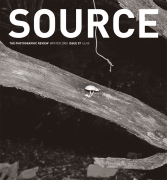Anxiety-Ridden Scrutiny
Kafka and Photography – Carolin Duttlinger
Book Review by Clive Scott
Issue 57 Winter 2008
View Contents ▸
Kafka and Photography by Carolin Duttlinger
Published by: Oxford University Press
ISBN: 978-0199219452
Price: £58.00
For many writers – Walter Benjamin, Philip Roth, W.G. Sebald – photographs of Kafka have been the source of troubled and fertile preoccupation. Kafka’s own attitude to the photograph is at the very least ambivalent: while he delights in photography’s ability to bring those close to him closer – as confirmations of intimacy – he has a suspicion of the camera’s easy access to the uncanny, the ‘optical unconscious’, the alienating. Photographs are ellipses, riddles, that the writer tries to tease into sense without really succeeding.
Carolin Duttlinger’s authoritative and scrupulously researched account of Kafka’s engagement with the photographic medium bases itself on a cross-reading of his literary texts and personal writings (correspondence, diaries). Chapter One is perhaps particularly appetising for students of photography inasmuch as it examines Kafka’s photographic ‘consciousness’ as diagnosed by the three Frankfurt School figures, Siegfried Kracauer, Theodor Adorno and Walter Benjamin. The treatment of Kracauer and Adorno is a trifle summary; Benjamin’s interest in the studio portrait of the four-year-old Kafka, as a prefigurative allegory of Kafka’s literary concern with the construction of identity, is more developed and engaging. But for all three critics, photographs embody the resistance to totalising interpretation or synthesis to be found in Kafka’s own "heterogeneous, incongruous, and often opaque imagery". This latter finding makes puzzling Kafka’s lack of affection for cinematography, on the grounds of its fragmentational procedures, its disempowerment of the spectator, and its cultivation of kinesis at the expense of synthesis, explored in Chapter Two. The panorama, specifically August Fuhrmann’s Kaiser Panorama offers an alternative, more contemplative mode of visual relationship, but it, too, entails a technological conditioning of perception. These particular lines of enquiry converge in Chapter Three, with its analysis of Der Verschollene (Amerika) (1912-14). Although this unfinished novel is set in the States, it is ‘inspired by the author’s European travels and by his encounters with the visual culture of his time’ and negotiates the tension between photographic and filmic viewing habits, as indeed between the kaleidoscopic American street scene and the stark, familial power politics of the European portrait photograph. Franz Kafka, c. 1887
Franz Kafka, c. 1887
Chapter Four is devoted to Metamorphosis (1912) and its photographic and intertextual transformations. This fascinating unravelling of threads finds at its heart the unavoidable observation that social authority is based on social submission, and that the price of avoiding that truth is social exclusion. The fifth chapter, which traces the role of photography in Kafka’s correspondence with Felice Bauer is part justification of the claim that Kafka is "one of the most original and thought- provoking commentators on photography in the twentieth century". Kafka asks photographs to mediate in his developing epistolary relationship with Felice; and further asks details within those photographs to act as fetishistic substitutes for what lies out of sight, in the blind field; and he elaborates viewing strategies to overcome perceptual frustrations. Like any relationship heavily dependent on reciprocated photographs, scrutiny of the evidence becomes an anxiety-ridden and obsessive exercise. But photographs also supply a subversive and transgressive currency of seduction, particularly in Kafka’s short-lived, ‘alternative’ flirtation with Felice’s friend Grete Bloch.
These varied photographic themes – photography and the psycho-social dynamics of power, photography and the compulsions of close, detectival examination, photography as the instrument of repressed eroticism – are drawn together in a searching and compelling account of The Trial (1914), the subject of Chapter Six. In the final chapter, Duttlinger moves on to consider, with characteristic incisiveness, the photograph’s power to manipulate belief, to purvey the inauthentic, to open up gaps of understanding between those who make photographs and those who view them (Blumfeld, an Elderly Bachelor 1915); the uncontrollability of the photograph’s modes and areas of operation (A Hunger Artist, 1922); and, finally, the photograph’s activity as an obstruction both to reliable perception and to interpersonal communication (The Castle, 1922).
Duttlinger concludes that Kafka’s approach to photography does not have large theoretical ambitions, but is constituted by responses to individual images. Kafka leaves little room for the photographer and takes scant interest in photography’s aesthetic pretentions, because the control and intentionality that they presuppose would interfere with his own ‘authoring’ of the photographs, with his fondness for drawing out of the image its hidden clues and designs, its versions of the uncanny. Some may find Duttlinger’s argument occasionally a touch cumbersome; some may regret that there is not more speculation about photography’s possible stylistic implications for Kafka’s work. But the rewards far outweigh these niggles. This is an invaluable and absorbing study, as illuminating in its insights as it is meticulous in its scholarship.
Other articles on photography from the 'Portraiture' category ▸





